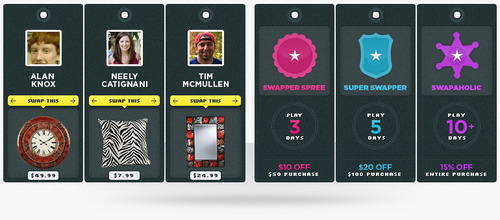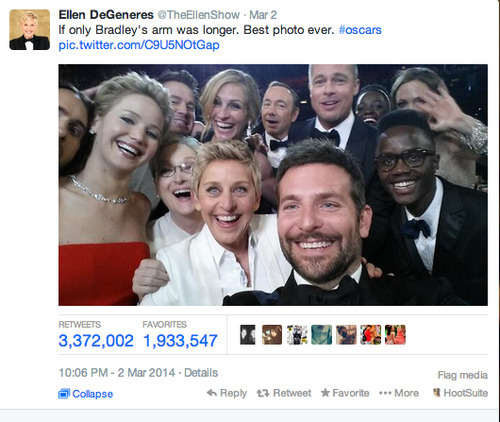By Nate Fleming, Strategic Guru, redpepper

Advertisers need to start thinking about what a social strategy would look like if there were no longer organic reach potential on Facebook. At least that’s the latest from Facebook representatives commenting on a recent Social@Ogilvy study showing that soon there may be no space left on Facebook for unpaid posts.
This might be good in that it could cause people to fully adopt a new way of thinking about how to succeed as an advertiser in the age of interactive media. The era of reaching people through their personal networks without having to “buy” your way in (i.e. organic reach) and having them share it with hundreds and sometimes thousands of their friends in an instant is not only possible but happens every day.
Mind you, some of the most effective media channels in history cost money to use. Television, newspapers, magazines, radio, billboards — all of which are still viable media outlets — cost money. And they cost money because they deliver eyeballs, ears, minds, hearts and, in the end, the almighty dollar. And now that Facebook has 1.3 billion pairs of active eyeballs (and everything that comes with them) per month, it is of course going to do what it can to capture its share of the trillions of dollars spent on media annually. Even if that means populating your news feed with paid advertisements.
To be clear, Facebook isn’t dying; it’s just becoming something new. Or old, depending on how you look at it. Ironically, the platform that helped define the “social media” area is quickly becoming its own antithesis. A paid media channel.
Let that sink in for a minute.
So Now What?
For starters, the social platform playing field will be one less behemoth. Because, statistically speaking, users will do their socializing elsewhere across multiple social channels. Keep in mind that consumers don’t consciously distinguish between media. For the most part, people experience the world around them using as many ways as possible to collect and share relevant information.
That’s what we do as humans. We find things we like and then we share them with other people. For a number of reasons, not the least of which is the fact that by sharing content we fulfill some type of intrinsic need including needs like to:
- Be helpful
- Seem smart
- Entertain or be entertained
- Boost our self-esteem
- Cause trouble
- Be the first
- Join the “in” crowd
- Simply be connected
When we think of social media we think of “sharing” platforms. We think opportunity not ad space. And, in the event that other popular channels fall victim to the tyranny of stockholder demand, we can avoid falling victim to the volatility of any single social platform by developing what Marshall Manson of Social@Ogilvy calls “platform neutral strategies.”
One such strategy is known as “The Viral Loop.”
Creating The Viral Loop
A viral loop occurs when shared content attracts new visitors who engage with the brand and share with their personal networks — and so on and so on. It mimics what we have been doing for hundreds, thousands, maybe even millions of years.
Think of a viral loop as a platform neutral context for your audience to engage and share with one another. By creating a viral loop independent of any single platform, we can keep the social in social media while still maximizing ROI on our media spend. Context engages the emotions, which increases interest, engagement and, yes, sharing.
Viral loops work much better for content that can be shared across multiple platforms such as interactive games, sweepstakes, high-quality imagery, entertaining videos, valuable information, etc. In fact, just creating great content isn’t enough. The perfect environment for viral loop makes sharing the content as easy as mentioning it at the water cooler, around the dinner table, or over a happy hour martini. Advertising “messages” and traditional sales pitches do not fare so well in this environment.
Using a few basic principles, you can create a viral loop that is engaging and enables people to easily share your content across multiple platforms.
Identify And Activate Your “Seed Groups”
A viral loop begins with engagement and is best powered by the people closest to you. Find ways to engage existing ambassadors and empower them to share your content. Creative giveaways are a timeless strategy that always works, so long as you have something you know people want and can relate to. Start by activating your email database or simply by reaching out to existing fans and followers.

Make Engagement Seamless And Remove Barriers
Naturally intersecting with people’s lives and online/social habits is key. Go where the action is, and meet people where they are. Nike did a great job of this in creating a shoe-building app that intersected with the pictures people were already taking on Instagram, using the images as inspiration to design custom shoes, and making engagement seamless.
Sometimes removing barriers means investing in technology so that you don’t have to ask your audience to take a ton of steps. Home decor retailer Kirkland’s ChaChing promotion included a custom-built swapping platform embedded in Facebook that allowed people to play with their friends in that platform, rather than having to leave to go somewhere else.

Promote And Reward Sharing Behavior
Content that is a good fit for that particular platform, and feels natural to share, typically gets more response. Kirkland’s Pinterest campaign, Pinning Parlor, included beautiful photography of decorated rooms that were highly “shareable” because they reflected the styles and tastes of their customers in a “real-world, livable” visual context versus just product pictures. This is key for making images shareable on Pinterest.

Oreo’s Super Bowl blackout tweet or Ellen’s Samsung selfie are different, and also great examples of things that need no incentive to share because the content itself is valuable enough.

Make It About “The Share”
In today’s world, PR is about content and “shareability.” You no longer need special access to media people because everyone with a blog or Twitter feed is now a media person. Everyday social media channels can often generate so much buzz that traditional, paid media outlets actually turn to them for good content — as opposed to the other way around.
Facebook’s success as a social juggernaut is a testament to the power of facilitating human interaction online.
The overarching, practical objective in creating and maintaining a viral loop, then, is to consistently create highly relevant content that people will happily spread for you through blogs, Twitter, Instagram, Pinterest, Vine, someone’s next article in the New York Times…just don’t expect it to show up naturally on Facebook.
You’re gonna have to pay for that.
Nate Fleming, a creative strategist and one of the founding fathers at redpepper, provides keen insights into why we humans do what we do. He has a way of delving into the mindset of a new target audience and building solid strategic foundations for redpepper’s next project. He has delivered insightful keynotes to the International Association of Business Communicators and appeared as a speaker and panelist in the Nashville Business Journal’s Crash Course in Marketing seminar. His words have also made their way to Forbes.com, ChiefMarketer.com and the highly trafficked industry blog, Adrants.






